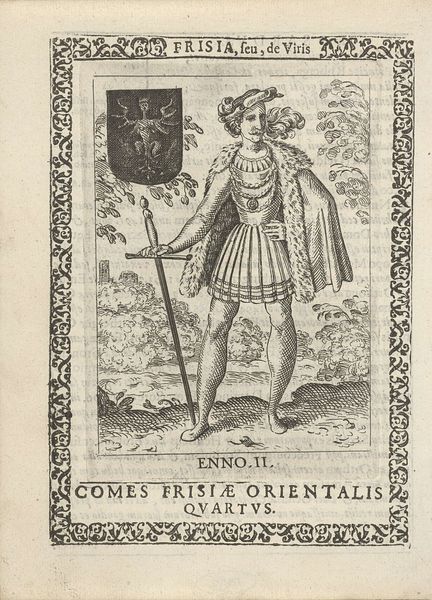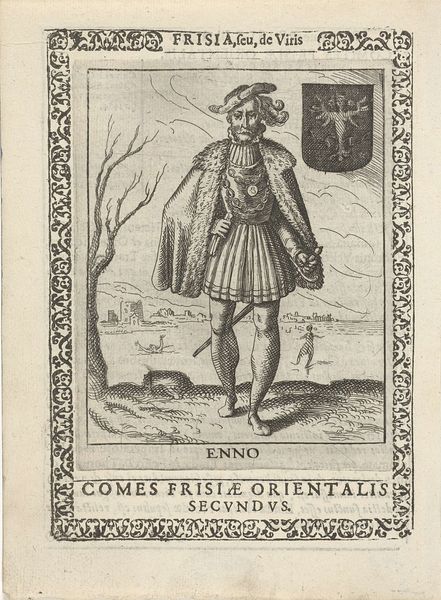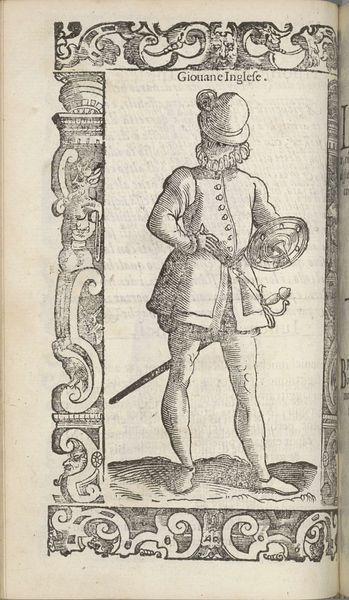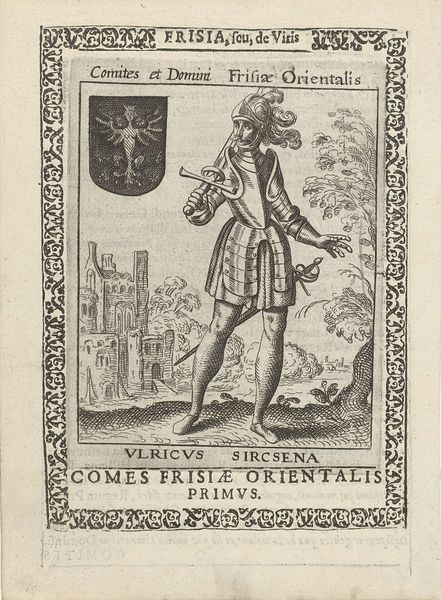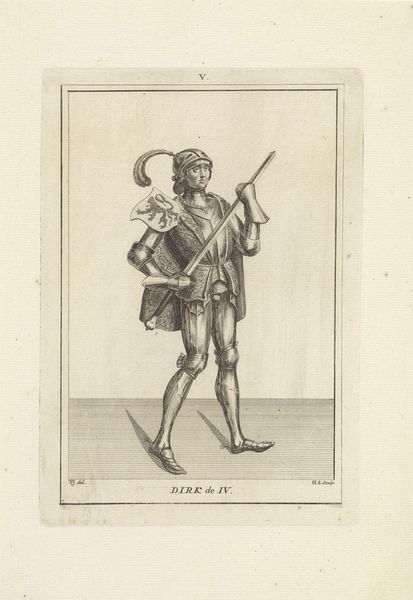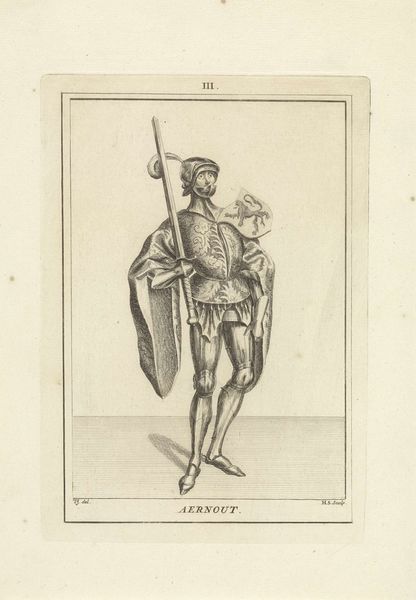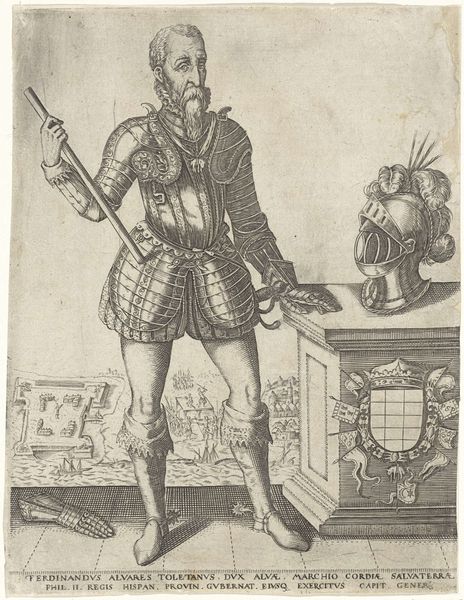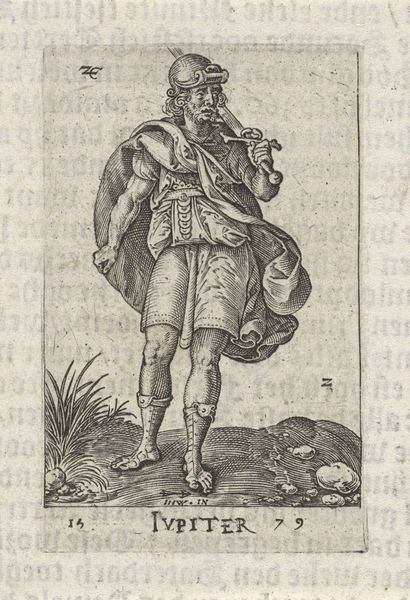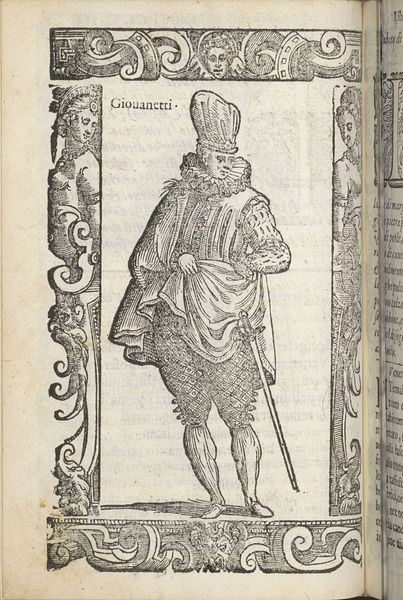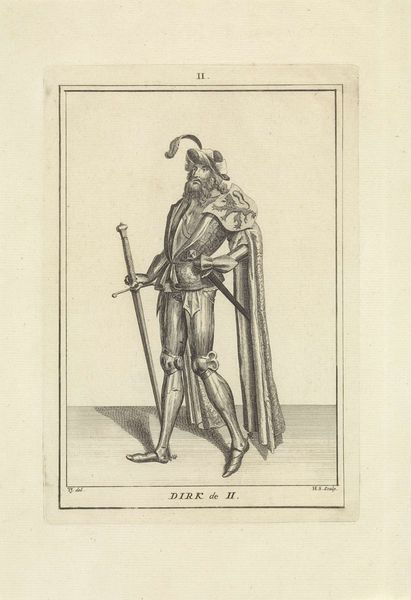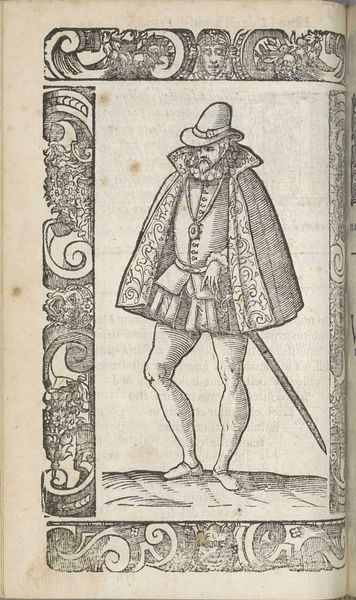
print, engraving
#
pen drawing
# print
#
line
#
history-painting
#
engraving
Dimensions: height 125 mm, width 100 mm, height 158 mm, width 115 mm
Copyright: Rijks Museum: Open Domain
Curator: Before us, we have a print dating from 1618 to 1620, "Edzard I, derde graaf van Oost-Friesland" created by Pieter Feddes van Harlingen, currently held here at the Rijksmuseum. Editor: My immediate reaction is one of formality and perhaps slight discomfort. The subject appears stiff, even vulnerable, despite his armor. The etched lines, though precise, create a kind of anxious energy. Curator: The print serves as a potent symbol of power, particularly within the socio-political landscape of the Dutch Golden Age. We see Edzard I, a historical figure representing a legacy of authority, rendered through the detailed labor of printmaking. The inclusion of his coat of arms further emphasizes the lineage and dynastic claims intertwined within representations of power. Editor: The way his armor is depicted is interesting; you can practically feel the weight of the metal. The lines forming the landscape and castle in the background are very economic but quite effectively suggest a specific place and its role in the narrative. It is clear that the materiality and method of its creation played an essential part. Curator: Yes, absolutely, and when considering the artistic traditions from which it stems, we also have to ask what it says about notions of masculinity. Is this a representation or a critique? Edzard's rigid posture and stern gaze imply a stoic, masculine ideal of leadership. This carefully crafted image engages with the politics of representation, reinforcing or questioning societal expectations of its era. Editor: Right, I am really intrigued by the choice of engraving. It is an accessible medium, relatively speaking, meaning it can reach a wide audience. That implies a democratizing element to the propagation of this image of power. I wonder about the workshop practices. How many hands contributed to this image? The labor of its creation gives it meaning too. Curator: It does indeed. Seeing how an artifact connects to society then, and continues its relation with today's social and power structures is key to a more holistic understanding of the piece. Editor: A vital reminder of the interconnectedness between artistic production, the materials used, the people that crafted them, and the subject of the artwork itself!
Comments
No comments
Be the first to comment and join the conversation on the ultimate creative platform.
